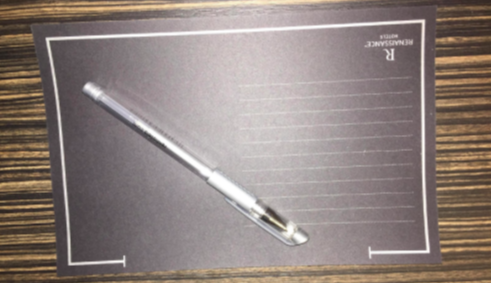Last fall, I was facilitating strategic planning for an Atlanta-area nonprofit, and, as usual, there were hotel-provided pens and scratch paper at each seat. I didn’t pay much attention to them, though, as I was busy with my own preparation. About halfway through the first session, however, I needed to write a note, and I had left my notebook across the room. So I picked up the hotel-supplied pen and jotted a note on the agenda page that was in front of me.

To my surprise, I could barely see the writing on the paper. Thinking that I had a bad pen, I picked up another and tried again—with no success. Seeing my frustration, one of the attendees leaned over and said, “You have to use their black paper.”
What?

Turns out, the pens have silver ink, so you can only see what you are writing if you use them on the black paper. Why would the hotel do that? I must admit, the silver ink on the black paper looked really cool, but how functional is a pen that can ONLY write on black paper?

In the end, I decided the reason the hotel used these pens must be to save money: when they left, people would realize there was no reason for them to take the pen with them since it had limited utility without the black paper. I guess it was a cost-saving mechanism; the hotel likely saves money on the annual pen budget.
But if there is an expectation that you can generally write on a white piece of paper with a pen, and the pen doesn’t work, have you truly exceeded expectations? Be careful when you try something “original” or “cute” in a situation where there is a time-honored way for a critical component to be used (i.e., a pen that will write on most any paper).
I like that the hotel was trying to be innovative; though maybe they could have been innovative on the snacks instead.